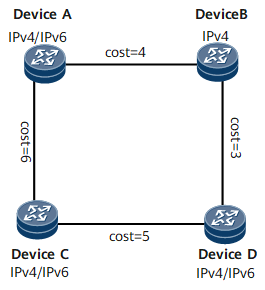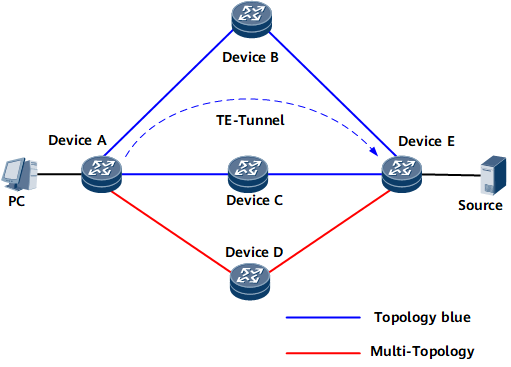IS-IS MT
Figure 1 shows the use of IS-IS MT to separate an IPv4 topology from an IPv6 topology. Device A, Device C, and Device D support IPv4/IPv6 dual-stack; Device B supports IPv4 only and cannot forward IPv6 packets.
If IS-IS MT is not used, Device A, Device B, Device C, and Device D consider the IPv4 and IPv6 topologies the same when using the SPF algorithm for route calculation. The shortest path from Device A to Device D is Device A -> Device B- > Device D. Device B does not support IPv6 and cannot forward IPv6 packets to Device D.
If IS-IS MT is used to establish a separate IPv6 topology, Device A chooses only IPv6 links to forward IPv6 packets. The shortest path from Device A to Device D changes to Device A -> Device C -> Device D. IPv6 packets are then forwarded.
Figure 2 shows the use of IS-IS MT to separate unicast and multicast topologies.
All routers in Figure 2 are interconnected using IS-IS. A TE tunnel is set up between Device A (ingress) and Device E (egress). The outbound interface of the route calculated by IS-IS may not be a physical interface but a TE tunnel interface. The routers between which the TE tunnel is established cannot set up multicast forwarding entries. As a result, multicast services cannot run properly.
IS-IS MT is configured to solve this problem by establishing separate unicast and multicast topologies. TE tunnels are excluded from a multicast topology; therefore, multicast services can run properly, without being affected by TE tunnels.

